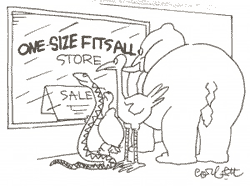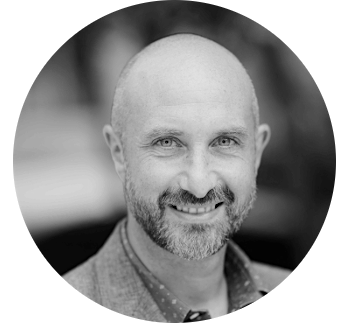The Problem with “New Models”
Over the summer, Michael Kaiser published a series of posts complaining about a lack of specificity in the ongoing chatter about a need for “new models” in the arts. I responded on this blog, both times, with my own thoughts on the subject. Last week, Kaiser published another post in which the critics are once again faulted for a lack of specifics:
This has left many suggesting that we need new models for running arts organizations (although I have yet to hear any suggestions of new models that could save large organizations like orchestras, ballet companies and opera companies) and others looking for draconian cuts to the budgets of the institutions they love.
This comment is actually something of an aside. Kaiser’s main argument is that the field is facing an existential crisis that is fundamentally fiscal in nature and that can best be solved by institutions becoming more effective at marketing and fundraising. I 100% agree with him that simply slashing budgets cannot save us from fiscal ruin. But it’s disappointing that he continues to dismiss the possibility that salvation may be more complex or require more radical innovation than simply doing more of the same, better. (I’ll also take his comment, along with the total absence of links in his posts, to mean that he’s reading neither this blog nor Diane Ragsdale’s. Alas, I find myself shouting into the void, and not for the first time…) But enough picking on Michael! The truth is, I share his frustration with the way most folks in our field talk about “new models.” The problem lies in the word “model.”

It’s obvious to everyone that the field is in real trouble, especially traditional institutions. The word “model” suggests that there is a magical template somewhere, like the secret of turning lead into gold, which could act as a panacea and solve all of our problems. Even better, this one template is supposed to work for every organization in every situation. What a lovely, comforting notion! If only someone could find the “new model” and share it with the rest of us, everything would be sunshine and rainbows now and forever! I hate to be the bearer of bad news, but no such model exists. (Rest assured, however, Santa is 100% real. I know because I met him at the mall the other day.) The challenges we face as a field are complex and stem from a mix of structural and cultural factors. No simple template, no one model will fix them. Holding out for the “new model” is waiting for Godot. Demanding that critics of the status quo “produce the model” is missing the point. Consider some of the more popular candidates for the role of magic bullet:
- Raise more money and sell more tickets? Absolutely! But for how long and how far? Can everyone do that or at some point is it a zero sum game? There is ultimately a limit to the amount of money our aggregate audience is willing to spend donating to arts organizations and buying tickets to their events. This argument is like someone in the early 20th century declaring that the solution to our transportation problems is to breed faster horses and maybe teach them how to fly. You might eke out some incremental improvements, but you’re not going to change the game.
- Increase government subsidies for arts organizations? Sure, but here, too, where’s the ceiling? The NEA makes $150 million per year in grants, compared to $13 billion in private philanthropy to US arts organizations. Tripling the NEA’s budget would amount to little more than a Band-aid. Meanwhile, how much of your budget do you really want coming from a single government agency that can be eliminated by the stroke of a pen from a freshman Congressman from Oklahoma? Relying on government support for the bulk of your budget is not a path to sustainability; it’s a recipe for terrifying fragility.

- Change all our organizations to L3Cs, B Corps, and Limited Leprechaun Partnerships? Business entity types are tax strategies, not models (business or otherwise). They’re fun to fetishize, and by all means we should be using these tools more often and in more creative ways. But there’s no super ninja tax status that can change the fundamental economics of our industry.
- Reinvent the governance function? Lots of good things could come from boards of directors being more community-based and/or reflective of the audiences we serve. Financial salvation isn’t one of them.
My point isn’t to be discouraging or to suggest that the situation is hopeless, it’s that complex, structural problems are rarely addressed by simple, superficial solutions. Instead of talking about new models, we should be talking openly, honestly, and unsentimentally about the myriad dysfunctional, inefficient, and/or unsustainable practices that are embedded in our field. And we should be experimenting bravely and scientifically with new strategies and tactics, some of which might turn out to have value for other practitioners. So what are these structural and cultural factors that jeopardize our future? Diane Ragsdale addresses the cultural aspects far better than I could, so I encourage you to give her post a good read. As for the structural ones, I’d like to highlight two of the most fundamental (and, for Kaiser’s benefit, I’m straying outside my comfort zone and thinking mainly of large institutions). These are far from the only structural challenges, but they’re pretty close to the root of the problem:
- Baumol’s cost disease — The arts don’t benefit from improvements in labor productivity the same way other industries do. It took 4 musicians to perform a string quartet in the 1700s, and it still takes 4 musicians today. Meanwhile, real wages inevitably increase over time. As history marches on, we are therefore guaranteed to get steadily less “bang for the buck” out of our professional artists.
- Fixed, non-scalable supply — A 500-seat theatre has 500 seats whether the show on stage is a hit or a dud. The electric bill doesn’t change, either, making this the worst of all possible worlds. Expenses can’t be reduced, and revenue can’t be increased above a fixed ceiling. This is the inverse of the web, where the same website can almost effortlessly go from supporting 1 visitor to 1 million visitors, with revenues increasing far faster than hosting costs as you scale up.
Now I’m going to do something really stupid and offer some semi-concrete suggestions for large organizations seeking to address these issues and improve institutional sustainability. I don’t have a template, but I’ll offer some provocations that might hopefully inform an experiment or two. If you’ll excuse the corporate speak, I find it helps to think abstractly in terms of inputs, content, and distribution. The artists are the inputs, the art is the content, and the seats are a distribution channel. What big institutions need is greater flexibility in the sourcing of artistic content and improved scalability (up and down) in the ways that content is distributed. The institutions with the most intractable labor problems are those with large permanent companies of highly skilled, unionized artists — Kaiser’s orchestras, ballet companies, and opera houses. This is Baumol in action, and I suspect we’re nearing the tipping point where the cost disease becomes fatal without radical intervention. The painful truth here is that keeping a large permanent company attached to a single institution may simply be an unsustainable practice. (I’m just the messenger, don’t shoot me!) It was fun while it lasted, and it provided a path for artists to make a decent living doing good work. But I predict this will become an exceptional practice maintained by only a handful of institutions, while the rest will develop different relationships with the creative workforce that supplies their content. Those relationships will need to be fluid, project-based, and authentically collaborative. The good news is that this may actually turn out to be empowering for individual artists. Sure, there’s something to be said for having a strong union that is willing to fight to the death for your job security. But there’s also something nice about embracing your inner entrepreneur and forging a path as a free agent. Gazillions of artists have already discovered this, and more are joining the movement every day. The distribution side is where things get exciting. I would argue that most large institutions are really in the business of distributing content, not producing content. If they choose to maintain a stable of musicians or dancers, then they’re essentially insourcing a critical supplier. The heart of the operation is about financing, marketing, and distributing artistic content. To really change the game, we have to blow up our established conventions around distribution. We must figure out ways of extending our performances beyond the limited seats in our theatres, and our exhibits beyond the limited floor space in our galleries. Yes, this is sacrilege. Yes, the live arts experience is sublime and pure and the reason we all got into this crazy business in the first place. We can either ride that purity straight over Kaiser’s fiscal cliff, or we can get over ourselves and go invent something equally sublime and wonderful that isn’t constrained by real estate and floor plans. The mundane example that everyone cites (and that I’ve cited before) is the Metropolitan Opera’s HD broadcasts in movie theaters. These have been more successful than I ever would have predicted, and demonstrate that even awkward first steps outside the concert hall can discover new audiences and new revenue. In the short term, they present an as yet un-pursued opportunity for the Met to leverage its unique distribution channel to promote work by other companies (hat tip to Diane for this idea). In the long run, the potential for innovation in distribution technology is far more profound. If I may be so crass as to quote myself from back in June:
Fifty years from now, I suspect we’ll look back on [the Met’s HD broadcasts] as a crude early experiment that laid the groundwork for currently unimaginable aesthetic experiences, like virtual reality immersion and environmental projection. If Mahler’s symphony can be performed “live” for an audience of millions, then suddenly the economics look pretty healthy.
If you’re not into the whole technology thing, then think about the possibilities for performances in community spaces like schools or commercial spaces like corporate events or (God forbid) even shopping malls. That approach doesn’t offer nearly the same potential for breaking free of existing distribution constraints, but at least it’s a move in the right direction. Look, none of this should be taken as prescriptive. I’m not trying to play Sherpa here, nor am I qualified for the job. Rather, consider these ideas some gentle provocations and a reminder that (a) structural problems require structural solutions and (b) template strategies don’t work for complex challenges. With that in mind, maybe it’s time to retire the term “new models,” and come up with some new shorthand that reflects both the magnitude and the nuance of the task at hand. Suggestions, anyone?
About Adam Huttler
Adam Huttler is the founder and Managing General Partner of Exponential Creativity Ventures. As a six-time founder, his career’s through-line has been about helping mission-driven companies use technology to drive innovative revenue strategies. Adam is best known as the founder of Fractured Atlas, a social enterprise SaaS platform that helps artists and creative businesses thrive.


